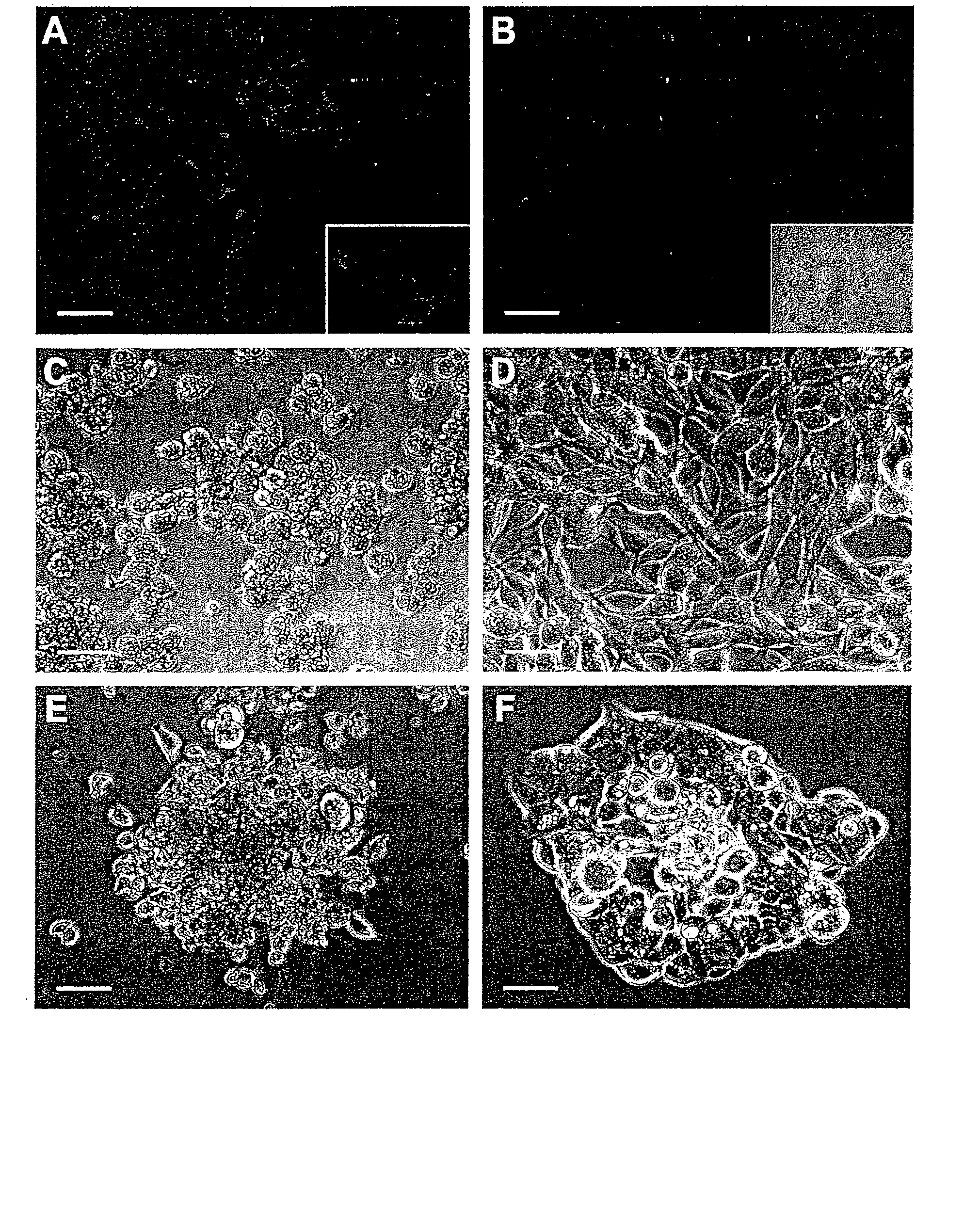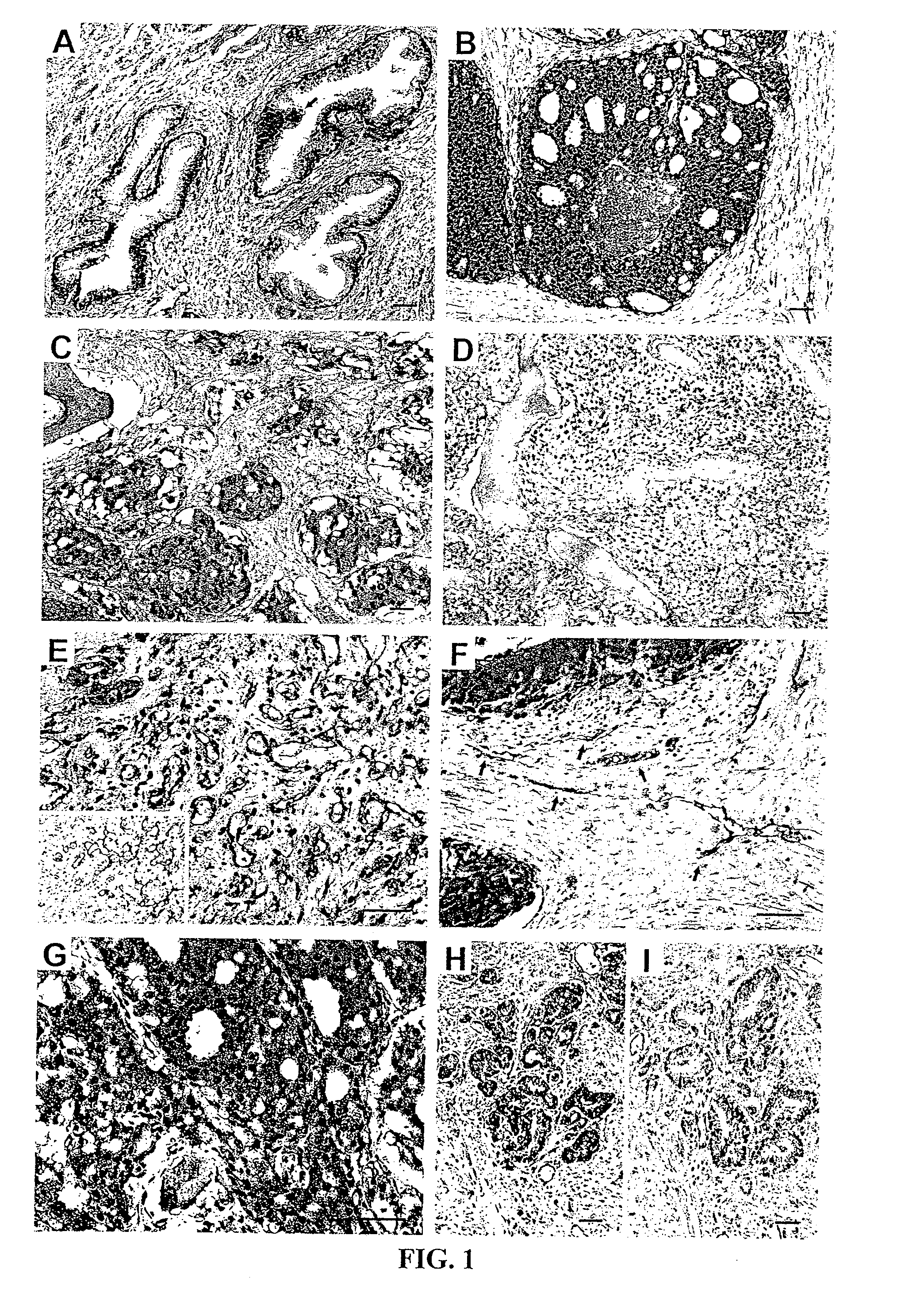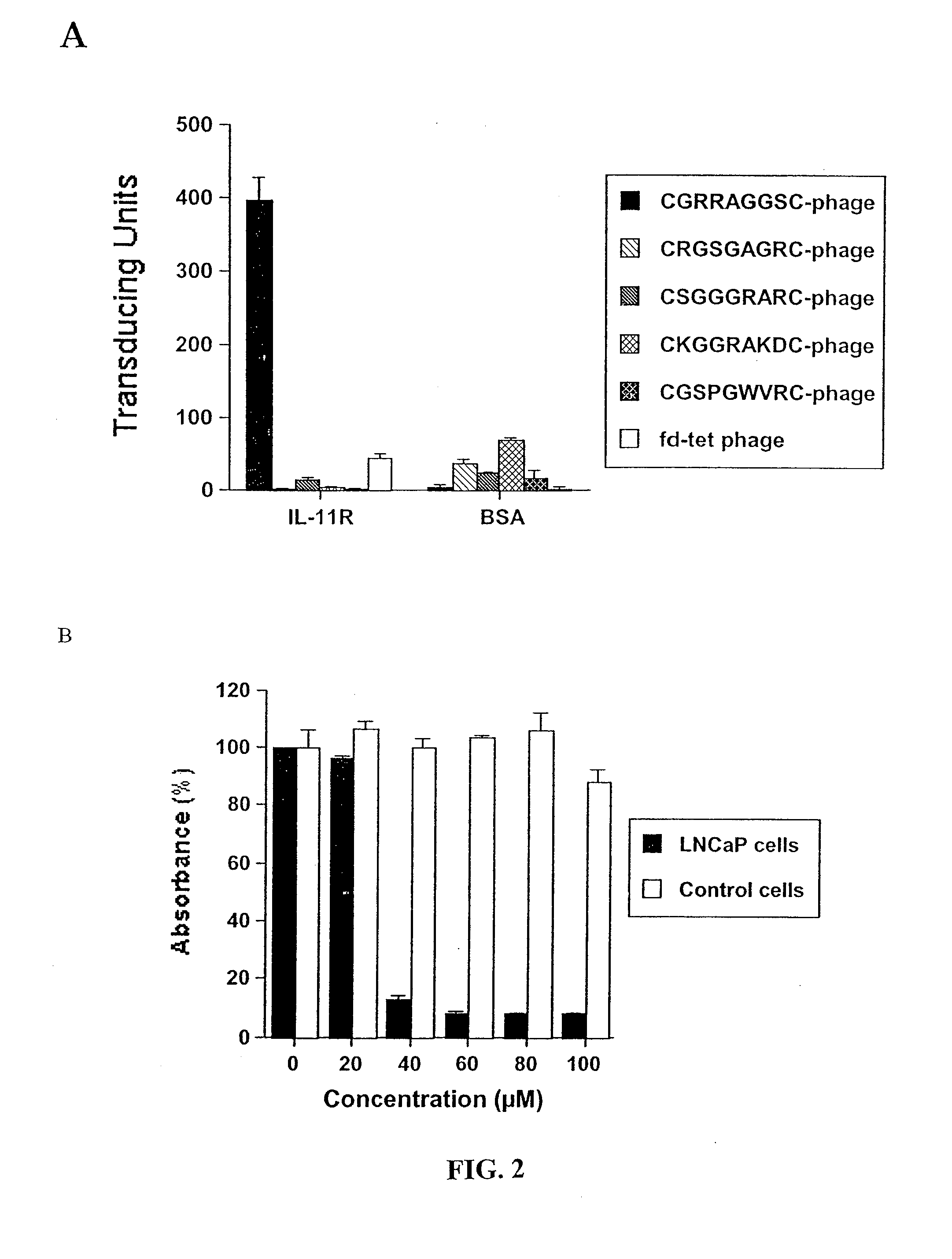GRP78 targeting peptides and methods employing same
a peptide and phage technology, applied in the field of medical diagnostics and targeted delivery of therapeutic agents, can solve the problems of inefficient and labor-intensive removal of background phage binding by repeated washes, limited therapeutic treatment of many conditions, and inability to fully utilize the effect of phage binding, etc., to achieve greater binding and increase the enrichment of the target organ
- Summary
- Abstract
- Description
- Claims
- Application Information
AI Technical Summary
Benefits of technology
Problems solved by technology
Method used
Image
Examples
example 1
Targeting Tumor Cells Using Selective Peptide Binding
A. Materials and Methods
[0242] Tissue Specimens and Immunohistochemistry. Ninety-nine formalin-fixed, paraffin-embedded human primary and metastatic prostate cancer samples were studied, derived from 90 patients (1 sample in 81 patients and 2 samples in 9 patients; median age: 61, range 40-81). Samples consisted of 81 primary adenocarcinomas, obtained either from radical prostatectomy (n=71 androgen-dependent, n=3 androgen-independent), cystoprostatectomy (n=6 androgen-independent), or pelvic exenteration (n=1 androgen-independent); and 18 lymph node and bone metastases (Table 3, which represents clinical and histopathological characteristics and IL11Rα expression). Human samples were selected to reflect: (i) stages in prostate cancer progression; (ii) differing Gleason scores; and (iii) zonal origin (peripheral zone and transition zone). Additional blocks from the same specimens, including benign prostatic tissues from periphe...
example 2
Adipose Tissue Targeting
[0294] A. Material and Methods
[0295] Experimental animals. C57BL / 6 mice were purchased from Harlan Teklad (Indianapolis, Ind.); ob / ob mice (stock 000632) were purchased from Jackson Laboratories (Bar Harbor, Me.). All animal experiments involved standard procedures approved by The University of Texas M. D. Anderson Cancer Center and Baylor College of Medicine.
[0296] In vivo phage library selection. In vivo phage-display screening of a CX7C library (C, cysteine; X, any amino acid residue) for fat-homing peptides was performed as described. In each biopanning round, an adult ob / ob female mouse was injected intravenously (i.v) via tail vein with 1010 transducing units (TU) of the library. Phage (˜300 TU / g in round 1 increased to ˜104 / g TU in round 3) were recovered after 5 min of circulation from subcutaneous fat, and bulk-amplified for each subsequent round. Phage amplified after the third round of panning was enriched for fat-specific binders by adapting an...
PUM
| Property | Measurement | Unit |
|---|---|---|
| average diameter | aaaaa | aaaaa |
| particle size | aaaaa | aaaaa |
| particle size | aaaaa | aaaaa |
Abstract
Description
Claims
Application Information
 Login to View More
Login to View More - R&D
- Intellectual Property
- Life Sciences
- Materials
- Tech Scout
- Unparalleled Data Quality
- Higher Quality Content
- 60% Fewer Hallucinations
Browse by: Latest US Patents, China's latest patents, Technical Efficacy Thesaurus, Application Domain, Technology Topic, Popular Technical Reports.
© 2025 PatSnap. All rights reserved.Legal|Privacy policy|Modern Slavery Act Transparency Statement|Sitemap|About US| Contact US: help@patsnap.com



